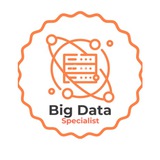tg-me.com/datascience_bds/751
Last Update:
𝐕𝐞𝐜𝐭𝐨𝐫 𝐃𝐚𝐭𝐚𝐛𝐚𝐬𝐞𝐬 vs 𝐆𝐫𝐚𝐩𝐡 𝐃𝐚𝐭𝐚𝐛𝐚𝐬𝐞𝐬
Selecting the right database depends on your data needs—vector databases excel in similarity searches and embeddings, while graph databases are best for managing complex relationships between entities.
𝐕𝐞𝐜𝐭𝐨𝐫 𝐃𝐚𝐭𝐚𝐛𝐚𝐬𝐞𝐬:
- Data Encoding: Vector databases encode data into vectors, which are numerical representations of the data.
- Partitioning and Indexing: Data is partitioned into chunks and encoded into vectors, which are then indexed for efficient retrieval.
- Ideal Use Cases: Perfect for tasks involving embedding representations, such as image recognition, natural language processing, and recommendation systems.
- Nearest Neighbor Searches: They excel in performing nearest neighbor searches, finding the most similar data points to a given query efficiently.
- Efficiency: The indexing of vectors enables fast and accurate information retrieval, making these databases suitable for high-dimensional data.
𝐆𝐫𝐚𝐩𝐡 𝐃𝐚𝐭𝐚𝐛𝐚𝐬𝐞𝐬:
- Relational Information Management: Graph databases are designed to handle and query relational information between entities.
- Node and Edge Representation: Entities are represented as nodes, and relationships between them as edges, allowing for intricate data modeling.
- Complex Relationships: They excel in scenarios where understanding and navigating complex relationships between data points is crucial.
- Knowledge Extraction: By indexing the resulting knowledge base, they can efficiently extract sub-knowledge bases, helping users focus on specific entities or relationships.
- Use Cases: Ideal for applications like social networks, fraud detection, and knowledge graphs where relationships and connections are the primary focus.
𝐂𝐨𝐧𝐜𝐥𝐮𝐬𝐢𝐨𝐧:
Choosing between a vector and a graph database depends on the nature of your data and the type of queries you need to perform. Vector databases are the go-to choice for tasks requiring similarity searches and embedding representations, while graph databases are indispensable for managing and querying complex relationships.
Source: Ashish Joshi
BY Data science/ML/AI
Warning: Undefined variable $i in /var/www/tg-me/post.php on line 283
Share with your friend now:
tg-me.com/datascience_bds/751
